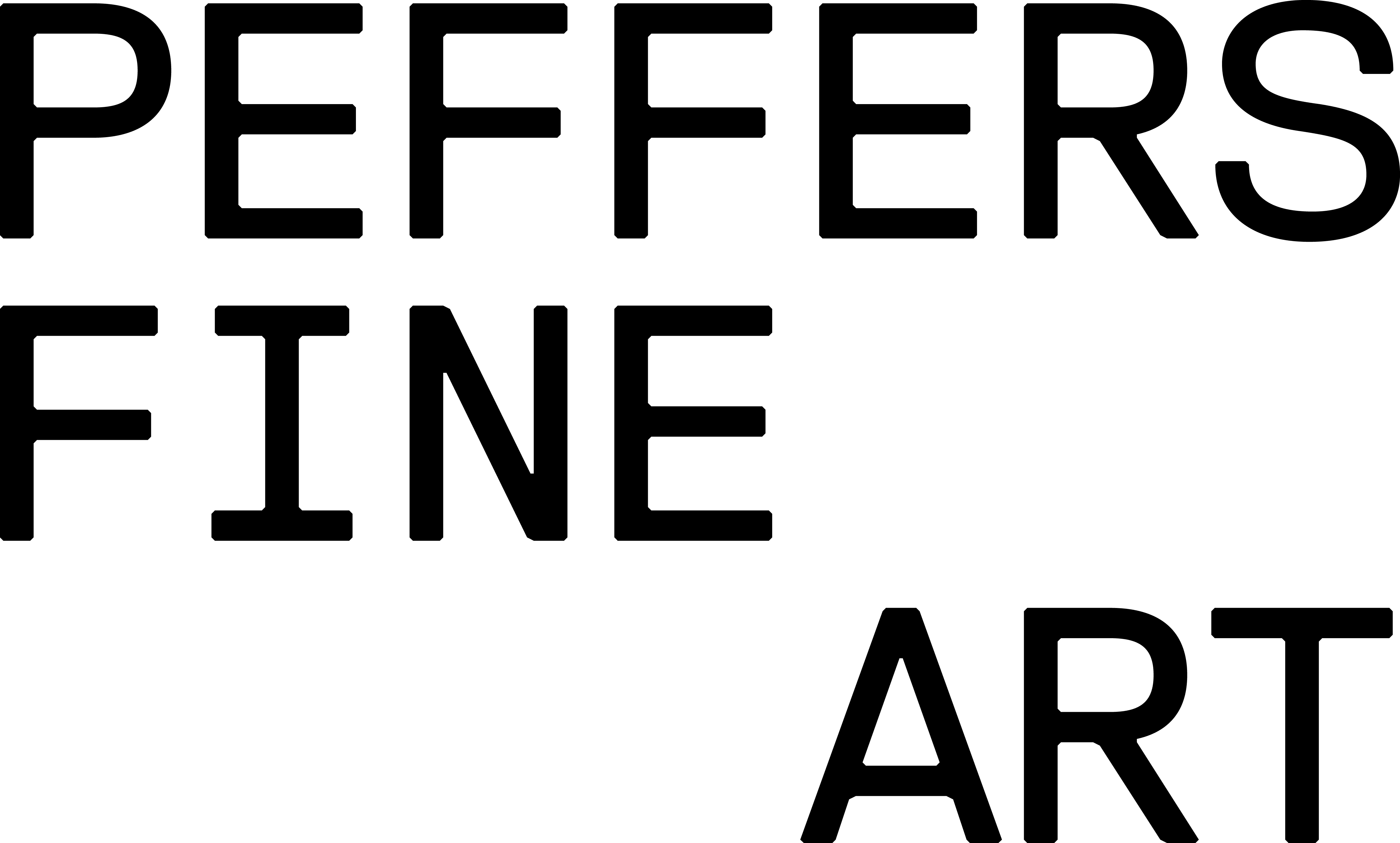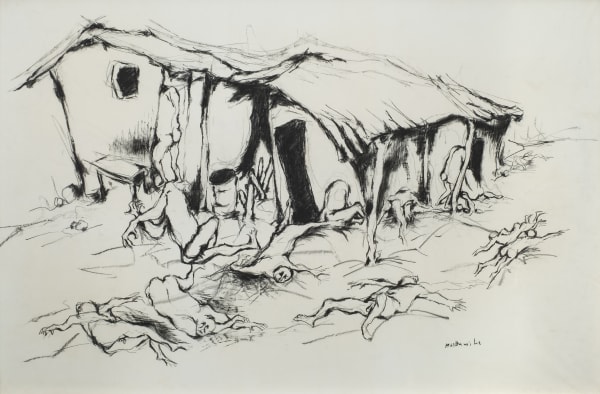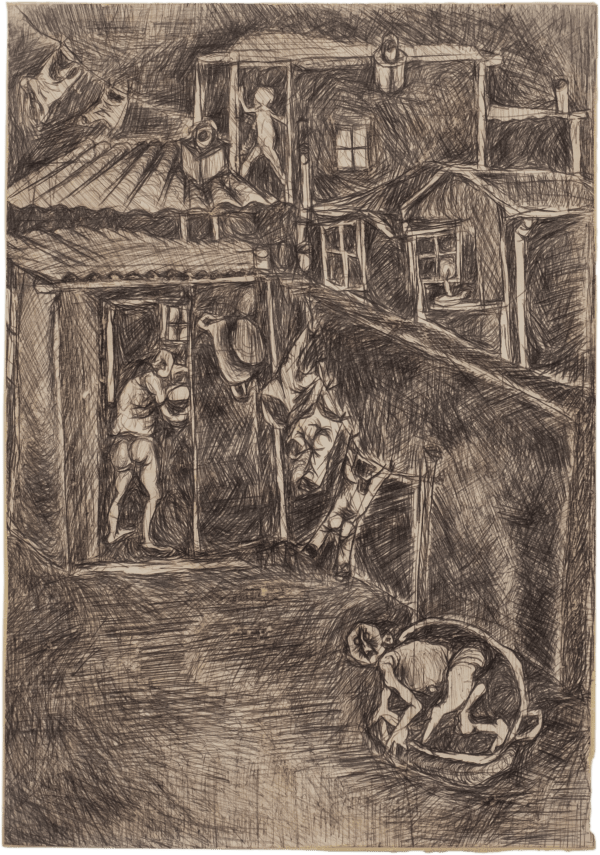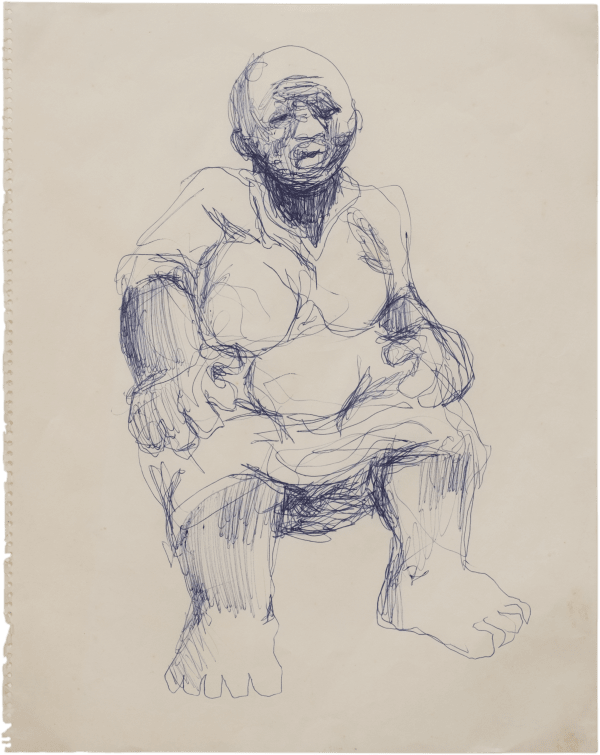Dumile Feni South African, 1939/42-1991
"It was all in the form, the shape, and the delicacy of representation that made me feel that he was not exploiting hardship, not exploiting nudity and not exploiting Africanness to make a point. He is saying something about humanity, the humanity that he knows: an African humanity. It was the sort of thing in the face of which I wanted to weep and to smile at the same time."
Justice Albie Sachs
Much of the life and the origins of the artistic talents of Dumile Feni are veiled in mystery - even his birth year remains unconfirmed. Dumile was born sometime between 1939 and 1942 in the small town of Withuis in Worcester. Until his twenties, he was largely self-taught until he came into the circles of Bill Anslie, Cecil Skotnes, and the Badsha family in Durban. Dumile is widely considered to be one of the most skilled and compelling proponents of a style of politically-motivated late-modernist expressionism, which most of his contemporaries intentionally avoided for the risk of attracting attention from the dreaded Security Branch of the then South African Police.
Dumile Feni's personal life was one of hardship and poverty. As a young man, he contracted TB and was regularly in and out of hospitals. His art is filled with emotionally charged portrayals of life in South Africa under the oppressive apartheid regime. Art historians including Edward de Jager, Mario Pissarra, and Ivor Powell claim Dumile to have been one of Africa's greatest late modernist artists. Or, as Prof. Anitra Nettleson writes, 'he was a great African artist of the twentieth century, perhaps one of the greatest African artists of this period.' His talents as an artist are in many senses summed up by Prof. John Peffer, who argued that Dulime 'extended the expressive distortion of the human form to its imaginative limit.'
While living in Johannesburg in the 1960s, Dumile was regularly described as the 'Goya of the townships'. His drawings of the terrors of apartheid not only became the objects of celebration but also state scrutiny. In 1968, due to the threat of arrest, he decided to go into voluntary exile in London. In London, he was picked up by the Grosvenor Gallery and had exhibitions at the Camden Art Centre. In 1979, he left for New York, where he occasionally exhibited but largely worked as a graphic designer. He died suddenly in New York while pursuing his love for jazz at his favourite music store, Tower Records. His work became hugely influential and is often noted to have been an inspiration for the likes of William Kentridge.
1963: Municipal Art Gallery, curated by Mme. Z. Wiznicka-Klecyzynska, Johannesburg, South Africa
1964: Exhibition of Charcoal Drawings and Terracotta Sculptures, Transvaal Academy, Johannesburg, South Africa
1965: Republican Arts Festival, Johannesburg, South Africa
1966: Gallery 101, Johannesburg, South Africa
1966: Transvaal Academy, Johannesburg Art Gallery, South Africa
1966: Artists of Fame and Promise, Adler Fielding Galleries, Johannesburg, South Africa
1966: Trans-Natal Group Show, Natal Society of Art Gallery, Durban, South Africa
1966: Pretoria Art Museum, Pretoria, South Africa
1966: Johannesburg Civic Theatre, Johannesburg, South Africa
1967: Gallery 101, Jonhannesburg, South Africa
1967: Transvaal Academy, Johannesburg, South Africa
1967: South African Pavilion, Expo 67, Montreal, Canada
1967: São Paulo Art Biennial, Brazil
1967: Sculpture South Africa, 1900-1967, Adler Fielding Galleries, Johannesburg, South Africa
1968: Grosvenor Gallery, London
1968: Sketches from a Private Collection, Goodman Gallery, Johannesburg, South Africa
1969: Contemporary African Art, Camden Arts Centre, London, United Kingdom
1969: Grosvenor Gallery, London
1970: Exhibition from the Collection of Desmond Fisher, Goodman Gallery, Johannesburg, South Africa
1970: The 51 Club Winter Art Exhibition, Goodman Gallery, Johannesburg, South Africa
1970: Contemporary African Art, Dublin, Ireland
1971: Gallery 101, Johannesburg, South Africa
1972: Gallery 101, Johannesburg, South Africa
1975: South African Sculpture, Goodman Gallery, Johannesburg, South Africa
1975: African Art from South Africa, Gallery 21, London, United Kingdom
1977: Contemporary African Art in South Africa, travelling exhibition between Rand Afrikaans University, Johannesburg; Pretoria Art Museum, Pretoria; University of Orange Free State, Orange Free State; William Humphreys Art Gallery, Kimberley; University of Fort Hare, Eastern Cape, South Africa
1977: Cape Town Festival, Gallery 21 and South African National Gallery, Cape Town, South Africa
1981: Black Art Today, Jabulani Standard Bank, Soweto, South Africa
1982: Art towards Social Development: an Exhibition of South African Art, National Museum and Art Gallery, Gaborone, Botswana
1983: United Nations Exhibition, Commemoration of Namibia Freedom Day, New York, United States of America
1988: Uhuru: an Exhibition of African American Art against Apartheid, City without Walls Gallery, Newark, United States of America
1988: Voices from Exile, Seven South African Artists, travelling exhibition between Washington, DC; Los Angeles, CA; Houston, TX; Philadelphia, PA, United States of America
1988: La Galleria, New York, United States of America
1990: Township Art from South Africa, Applecrest, New York, United States of America
1995-6: African Guernica travels to Munich, Germany; Chicago, and New York, United States of America
2001: The Railway Accident, IZIKO South African National Gallery, Cape Town, South Africa
2002: The Short Century: Independence and Liberation Movements in Africa, 1945-1994, Museum of Modern Art, New York, United States of America
2005: Dumile Feni Retrospective Exhibition, Johannesburg Art Gallery, Johannesburg, South Africa
Dube, Prince Mbusi. (2005). Dumile Feni Retrospective exhibition catalogue. Johannesburg: Johannesburg Art Gallery.
Dube, Prince Mbusi. (2010). Dumile Feni: The Story of a Great Artist Volume 1.
Johannesburg: Mutloatse Art Heritage Trust.








